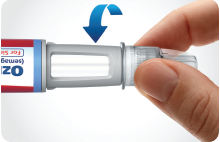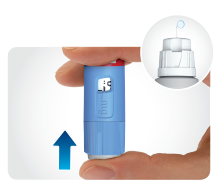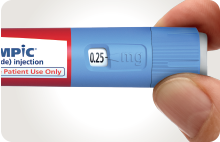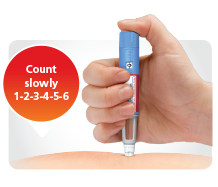

When it comes to treating type 2 diabetes, Ozempic is a drug that requires a prescription. The substance is classified as a member of the group of medications known as glucagon-like peptide-1 (GLP-1) receptor agonists. The semaglutide that is contained in Ozempic is the active component. To achieve its therapeutic effect, semaglutide imitates the activity of a hormone known as GLP-1, which plays a role in the regulation of blood sugar levels. It does this by increasing the synthesis of insulin and decreasing the quantity of glucose that is produced by the liver, which ultimately results in lower levels of blood sugar. In addition, Ozempic slows down the rate at which food travels through the stomach, which can have the effect of reducing hunger and promoting weight loss in certain individuals.
Yes, Ozempic (semaglutide) can aid in weight loss for some individuals. While it is primarily prescribed for the treatment of type 2 diabetes, studies have shown that Ozempic can also lead to weight loss as a side effect. This weight loss effect is believed to be related to the medication's ability to reduce appetite and slow down stomach emptying, which can result in consuming fewer calories. However, it's essential to note that not everyone will experience weight loss while taking Ozempic, and individual results may vary. Always consult with a healthcare professional for personalized advice and guidance regarding medication use and weight management.
Semaglutide, marketed under the brand name Ozempic, has demonstrated significant effectiveness for weight loss in clinical trials. In a large-scale study called the STEP trials (Semaglutide Treatment Effect in People with obesity), participants treated with semaglutide experienced substantial weight loss compared to those on a placebo.
In one of the trials, participants who received semaglutide lost an average of around 15% of their body weight over 68 weeks, while those on the placebo lost around 2.4%. These results highlight semaglutide's potential as a treatment for obesity and overweight individuals, especially when combined with lifestyle modifications such as diet and exercise.
However, it's essential to note that individual responses to semaglutide may vary, and it may not be suitable for everyone. Additionally, like any medication, semaglutide may cause side effects, so it's crucial to discuss its use with a healthcare provider to determine if it's appropriate for you.

Read the label to check that your pen contains Ozempic®. Make sure that the Ozempic® medicine in your pen is clear and colorless.

Tear off the paper tab. Push and turn the needle on until it is tight. Pull off both needle caps.

Turn the dose selector until the dose counter shows the flow check symbol. Press and hold in the dose button until the dose counter shows 0. Make sure a drop appears at the needle tip.

Turn the dose selector until the dose counter shows the dose you need to inject (0.25 mg or 0.5 mg for the red‑label pen, 1 mg for the blue-label pen, and 2 mg for the yellow-label pen).

Insert the needle into your skin. Press and hold down the dose button. After the dose counter reaches 0, slowly count to 6. Remove the needle from your skin.

Carefully remove the needle and place it in a sharps container. Put the pen cap back on the pen.
Like any new medication you take, your body will have to adjust to it and it is likely to cause some side effects. Some of the most common side effects are the following: